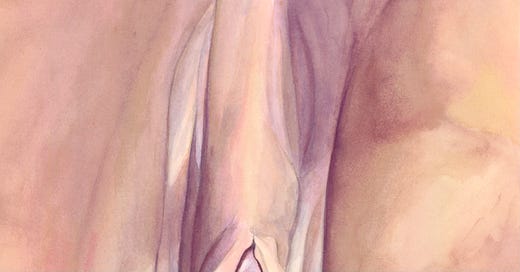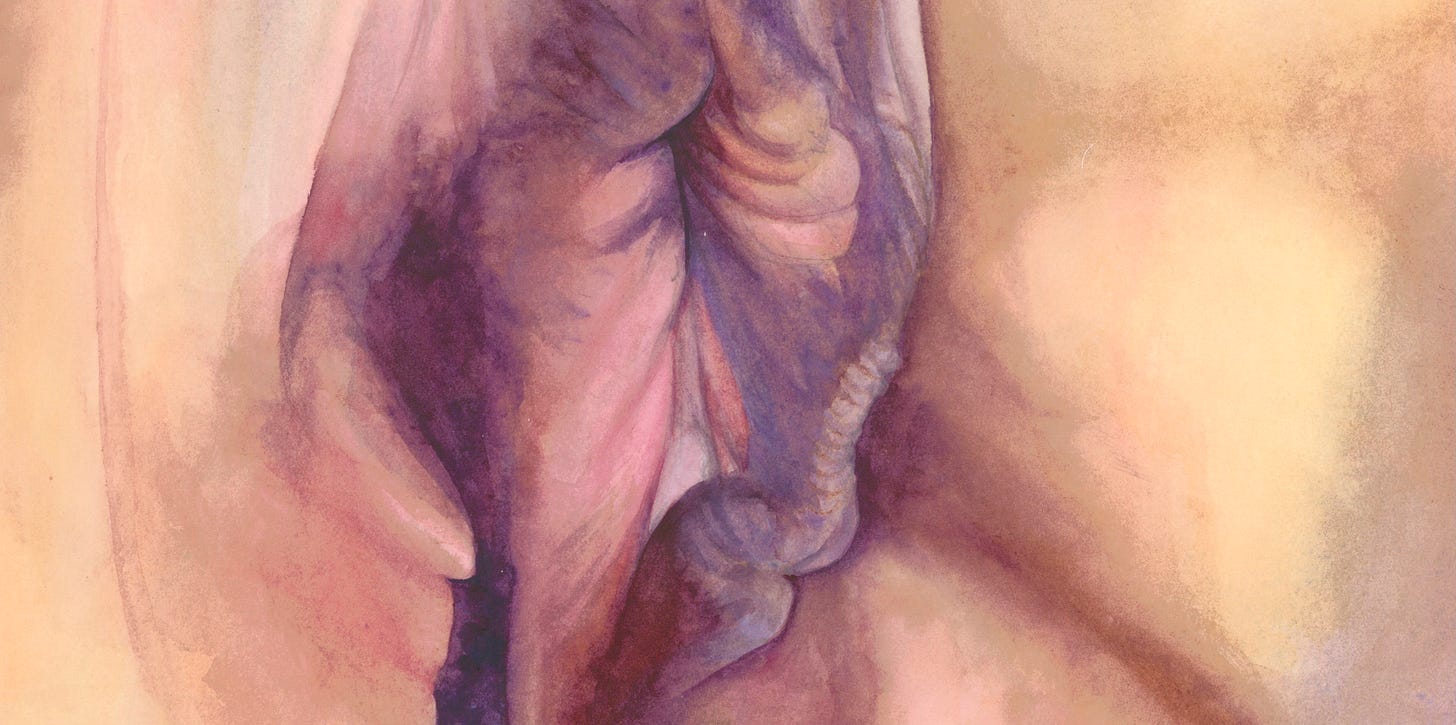Organs of Origin
Our sexual organs are such a curious part of Our Anatomy. Fleshy night blooming flowers, opening and closing, fragrant, juicy, no two exactly alike. Stamen rising and resting, they look more like sea creatures than anything we might associate with the modern, stylish human being. Changing color and shape like octopuses do to express mood, hunger, preference. And furry like a beast - although it may be more popular these days to remove that forest of antennae. Sensitive, impressionable, agile they are - not exactly in our control and not exactly out of our control.
These aquatic, vegetal beasts are one of the closest physical places to our place of origin. And what a watery, flexible, relational landscape they are. The terrain of the organs of origin offers humanity the possibility to summon overpowering pleasure, wonder, sorrow and rage. We also have the chance at underwhelming momentary satisfaction and life shattering shame.
Multifaceted, sensual opportunities to relate to self and other mark the pathways toward our place of origin.
Many of us have come to know our “junk” as the “reproductive organs”. There is a lot to say about this dastardly spell of naming and claiming, which I will cover in depth in a future entry. For now, I will point us back toward the gorgeous mystery of our organs of origin and share how this naming came to me.
I had been looking for a new name for our sexual organs for many years. I had an urgency for better names and knew that it could not be rushed. The question tickled me continuously in my studies. I prepared to present Our Anatomy to my cohort of Participatory Action Researchers at AR+, which was the most academic container my project had shown up in yet. With that focus, with that pressure to make the research shareable outside of my normal, witchy social circles, the name organs of origin slid out. I stared at the page where I had written it. My body hummed. I felt the weave with my teachers from the Andes to the Amazon. Tears emerged with this new possibility in my psyche. I found a way of calling to myself that was larger than the definitions we give to the reproductive organs or the sexual organs- a naming that guides us toward an understanding that these organs are not only for childbirth and sexuality.
The Andean and Amazonian elders offer stories of origin and ancestral thought when they feel that my consciousness is ready. Over the last few years, they have shared more and more ancestral thought about human sexuality and the sexuality of the Earthbody. Some things that take years to integrate. They share just enough to catch the scent. It is up to me to continue to study and notice where the teachings are guiding me. And when a realization is made, it is expected that I will check back to see if I am on the right track. It is also an act of reciprocity to circle back and share what is coming of my studies. The elders too are looking for evidence that their path is unfolding well. They consider it crucial and something to celebrate when the next generations learn to remember.
I wrote a text to Senacio Swaie Ignacio Murillo, a Muisca elder who is known for his work in the movement to regain ancestral memory in Andean and Amazonian communities through music, dance and storytelling and for his studies of planetary anatomy. I told him that I had made a discovery and wanted to check in. He called me back at 4:30am. I accidentally left my phone on. I happened to be awake and looked over to see the glow. This kind of resonant field is often present in moments like this. Conditions align to make connection and confirmation possible.
He told me he wanted to hear my discovery before he went into the jungle for a few weeks. I shared my path of finding the words organs of origin. He asked me if I knew the indigenous name for those organs. I said no. He told me that they are called the organs of origin.
Relief, gratitude and joy spread through every fiber. Confirmation that my path of study and my path of ancestral remembrance is progressing.
So, while I cannot take credit for inventing the term organs of origin, I can take part in remembering, refreshing and re-enchanting the connection with our blushing bushes and curious sprigs who gorgeously reek of the origin.
The painting that is slowly making its way to you in this entry comes from the watercolor series Arousal of the Crone. It is a self study about my anatomy of arousal that led me into the norms I have inherited from European colonialism about who gets to experience pleasure and how. This of course led to more questions. Who can hold erotic power? With whom can that be shared? In service to what? And why was it such a threat to the kingdom and the dawning of capitalism for grandmothers to be in their erotic wholeness?
If you enjoyed this entry, I imagine you might like to participate in a Participatory Action Research gathering. They have been popping up like virile spring shoots. People are gathering together to share stories and inquire into the mystery of our organs of origin - how they connect to our divine place of origin, the earthbody and our beloveds.
At research gatherings our inquiry begins by viewing the art collections emerging from this study - watercolor portraits of the organs of origin accompanied by the personal story lived by that flesh. I also share a bit more about what I have received from the elders and we move into somatic practice that leads to community dialogue. The host and I collaborate to find a theme that will speak to their local community. I had the pleasure of hosting six gatherings this winter/spring in San Francisco, Santa Barbara, Boulder, Vermont and Chicago is next. The possibility of a fall tour in Europe is emerging. Called to host? Let’s chat!







